Watercubs & Kivisilmän
working show-quality newfoundlands
and history
Kennel Sweetbay – Judi & Ellis Adler
-based on my visit in Spring 2010, email correspondence and the article “Newfoundland People” in the Newfoundland Annual 2001 by Sandra Miller.
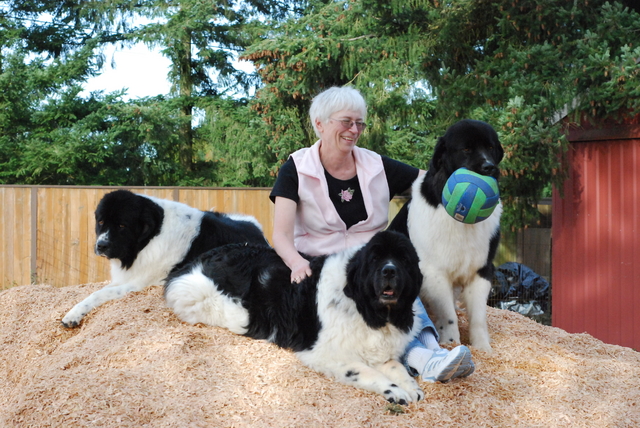
Judi Adler with her Sweetbay Newfoundlands
As I drove up to the Sweetbay kennel, I was greeted by the enthusiastic barking of Judi and Ellis' pack of Newfoundlands. I had read all of Judi's books and was excited to get the opportunity to talk to her and Ellis in person – and of course to get a small peak into the world of their famous working Newfoundlands.
The First Newfoundland
Judi and Ellis Adler got their first Newfoundland nearly 40 years ago, in 1972. They had been looking for a dog that had the happy Labrador personality, but was a little bigger, a dog who was gentle, child-friendly and loved the water. A Newfoundland turned out to be a perfect choice for their family. Ever since they brought that first eight-week-old Newfoundland puppy home, they have been completely devoted to the breed, having never owned anything but Newfoundlands.
Currently they have a very distinguished line. You can easily spot a Sweetbay dog from a line of fifty Newfs. It’s not their appearance that sets them apart from most Newfoundlands. Rather, it’s their energy level, athleticism and extreme social friendliness and outgoing good nature.
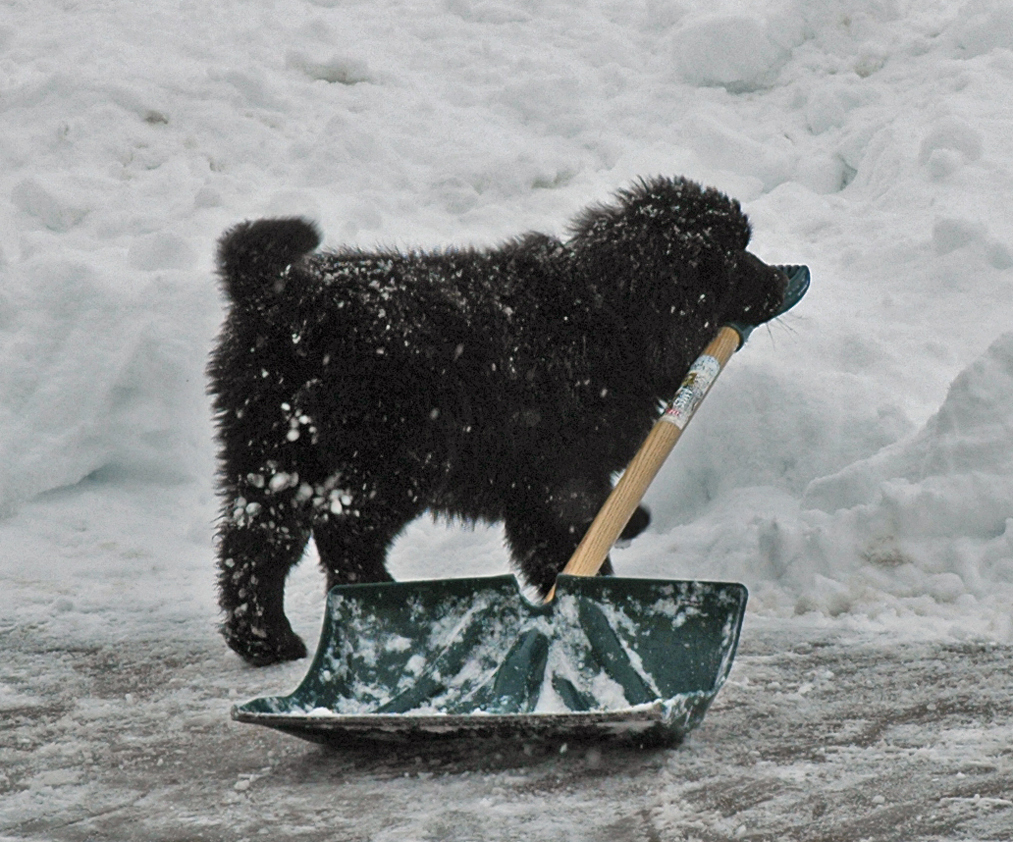
Getting in involved in breeding - Genetics is the key
Judi and Ellis Adler decided to start breeding when they realized that the Newfoundland they dreamed of owning wasn’t readily available. As they researched the breed and its many breeders, they were hoping to find a consistent source of healthy dogs with strong personalities and high working potentials. In other words, they wanted to maximise the chance of getting a puppy that would be healthy and smart and live a very long and happy life.
Finding careful, health-conscious breeders was difficult. Many breeders do not keep in contact with their puppy owners for very long. Yet many genetic health problems occur later in the dog’s life. If the breeders do not know how their puppies turn out, they cannot monitor and adjust their breeding program accordingly.
The other difficulty was that most breeders had different priorities than the Adlers. They weren't breeding for working Newfoundlands. They paid more attention to appearance than to personality traits (attentiveness, curiosity, instinct and social friendliness) or to physical traits like athleticism, stamina, strength, and powerful movement.
Ellis’s background in genetics gave Sweetbay a big advantage. Judi and Ellis base all their breeding decisions on the premise that everything is genetic. If a book or an authority argued otherwise, the Adlers believed it was because there had not yet been enough research. It didn't matter what the problem was, they considered everything to be heritable, and they stayed away. Says Judi, “It would never damage our breeding program if we avoided a dog whose health issue might indeed be due to an injury or some other environmental factor. However, justifying the use of a dog for breeding by calling his problem environmental (when it in fact was genetic) would have been disastrous.”
Judi and Ellis knew they were embarking on a long-term commitment to the breed. In essence, they were conducting a scientific experiment. “If we invest ten years of serious effort to this, can we make a positive difference? Can we reach the goals we have set for ourselves? Can we increase the health of the dogs dramatically? Can we maintain or increase the good traits we want at the same time?”
Judi and Ellis never had a positive mentor. No one person helped them along every step of the way, sharing good advice and being a role model. But they watched and learned a lot by observing the choices others made. In some cases they followed the examples, and in others they made a conscious decision to do the opposite. Breeding is “based on the choices we make and how true we are to them. That’s how we each can breed the type of dog we want. We knew the kind of dog we wanted to share our lives with. It didn’t bother us that it might be a different Newfoundland than other breeders were producing.”
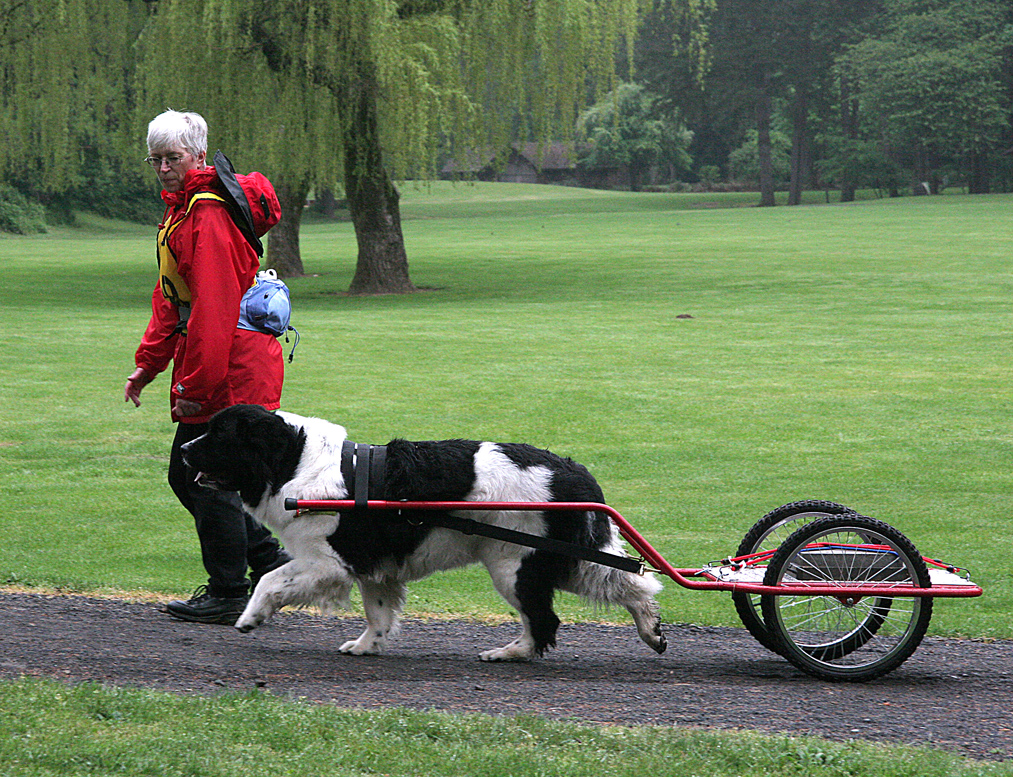
In search of the perfect kennel name
Judi and Ellis wanted something different for a kennel name, something that would stand out from the traditional Ship-this’s and Bear-that’s. They pored over maps, but found that all the good place names in Newfoundland had been used.
They wanted one distinctive word that had something of the essence of the breed in it and that looked good written out. Many sleepless nights were spent trying to come up with a good name. Then one morning, they had it: Sweetbay. It fit on so many levels. The Adlers’ Newfies are sweet. They howl in response to coyotes and sirens, using that peculiar drawn-out yodel that’s called baying. They swim in a bay. And there’s a “sweet bay” laurel tree, whose leaves are used in cooking – and the Adlers love to cook. Perfect.
Many years later, they learned that there actually had been a Sweet Bay in Newfoundland. It was a small fishing village that disappeared around a hundred years ago.
Breeding for the right reasons
“We do not evaluate puppies for pet and show quality, but we do evaluate puppies in terms of working quality. Our goal is to produce such a strong litter that it wouldn’t matter which puppy you choose. It will be able to do any job you send its way.”
The Adlers breed approximately two litters a year. In response to my question, Judi shook her head. “There isn’t any particular litter that stands out as the ‘best workers.’ We consistently produce dogs of enormous personality and drive, and it would be impossible to say that a particular breeding gave us better results in terms of working ability.” There may be differences such as overall size, or eye colour. But the Adlers focus on breeding healthy working Newfoundlands. Criteria of appearance are of less importance than good balanced structure, high energy and interest, and a solid temperament.
“To me the idea of perfection in a dog is much more a question of function than of looks. In terms of function, dogs can be built in different ways yet be equally functional. They can look different externally: they can have longer or shorter coats, they can weigh in at a hundred pounds or a hundred fifty. But can that dog swim for hours and then come out, shake off, and still want to go back in for more? Can he roar down the beach at 800 miles an hour and stop on a dime because a seagull caught his attention? That’s a dog that works.”
It has been crucial for Judi and Ellis to maintain their own databases for breeding. These include everything from health X-rays to longevity information – basically, anything and everything that can be recorded. One of their non-negotiable policies has been their stand on OFA certification. “We won’t breed a dog unless he or she is OFA certified. In addition, before we consider using a dog, not only does that dog have to clear OFA, but so do the majority of his sisters and brothers.”
One of the most valuable things Judi and Ellis have done is to purposely select for what they call breedability. “Good reproductive ability seems to go hand in hand with a lot of other things we like. The strong athleticism, easy movement, intelligence, long life, drive, soundness, and willingness to work - all those seem to be a part of the same package as good reproductive qualities,” Judi and Ellis note.
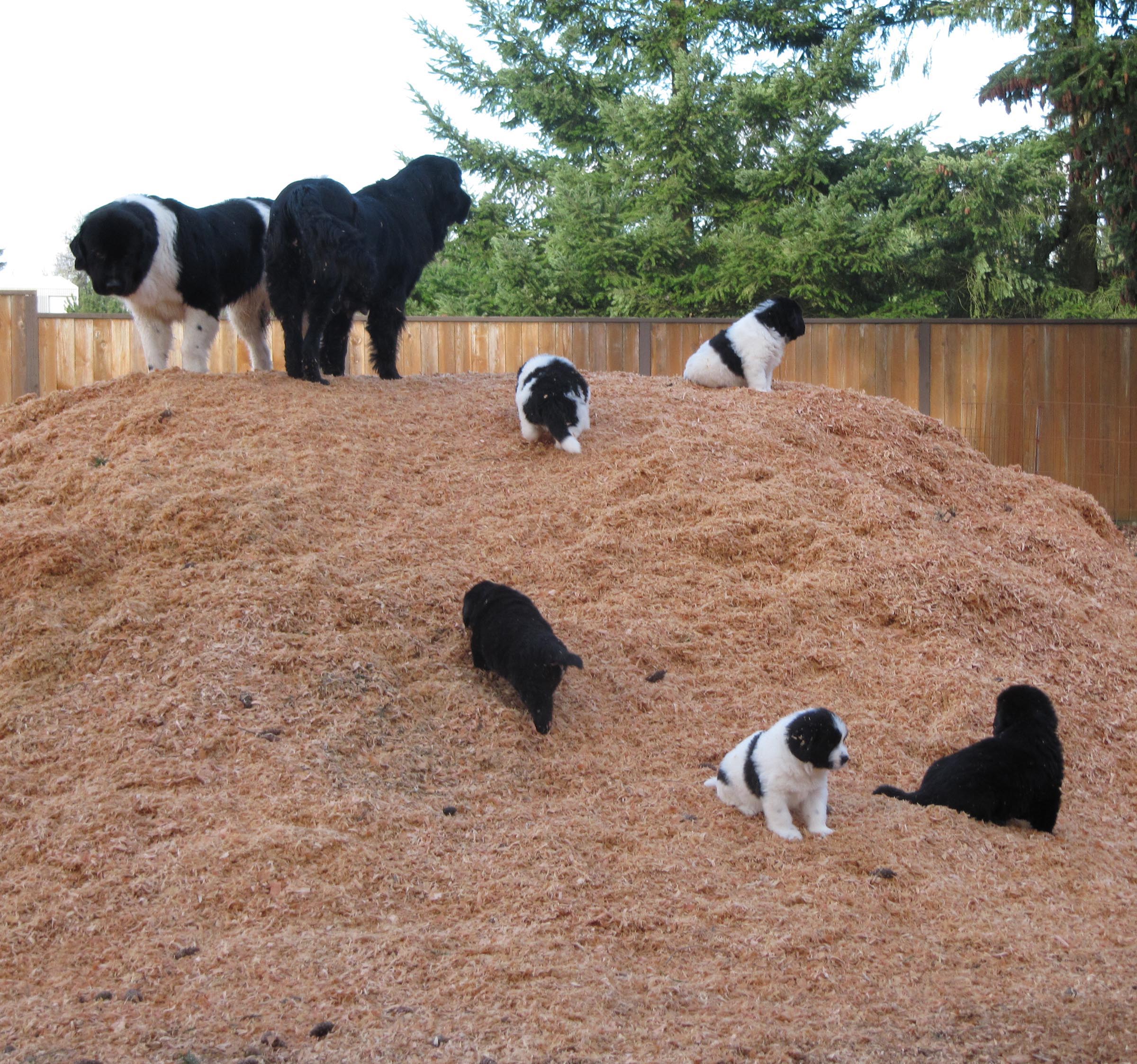
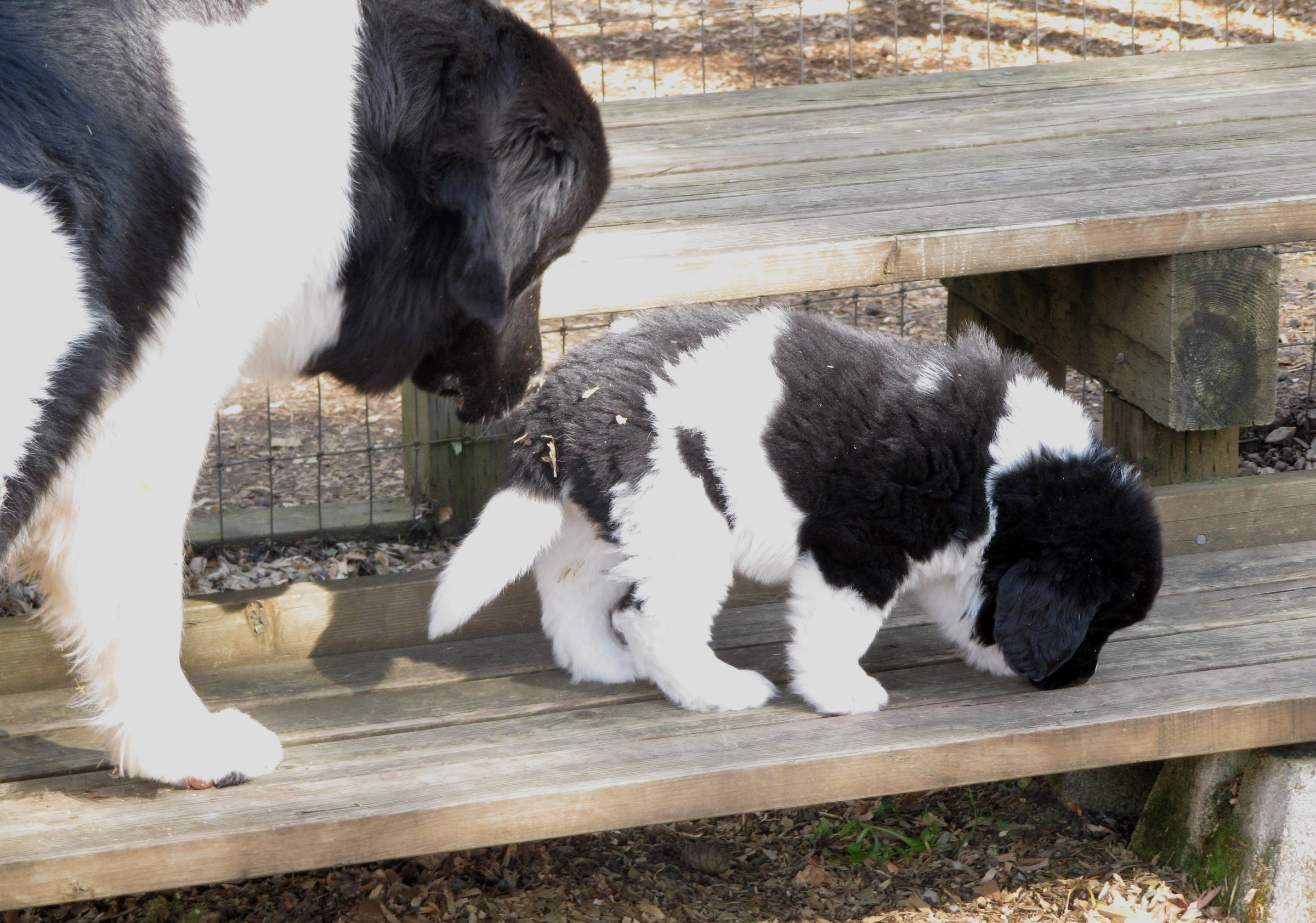
The water work instinct
The Adlers will tell you that, in their experience, playing in the water-bowl as a puppy has never been a consistent indicator of the puppy’s love for water as an adult. Some of the best water dogs do not show any outward signs of love for water as little puppies. And some of the most dedicated water bowl-paddlers have no interest when taken to lakes or rivers, no matter how patient or gentle the introduction. Love of water is genetic, as is the ability to swim well. “The best indicator of a puppy’s eventual water ability is found in his parentage,” says Judi. “If he comes from a strong line of true water dogs, his chance of being a strong water dog is virtually 100%.”
The working instinct can be described as a combination of the love of water, good retrieving drive and the dog’s willingness and enthusiasm to initiate and maintain contact with his owner and handler. “You know a good water dog when you see one. He will be as at ease in water as he is on land,” describes Judi.
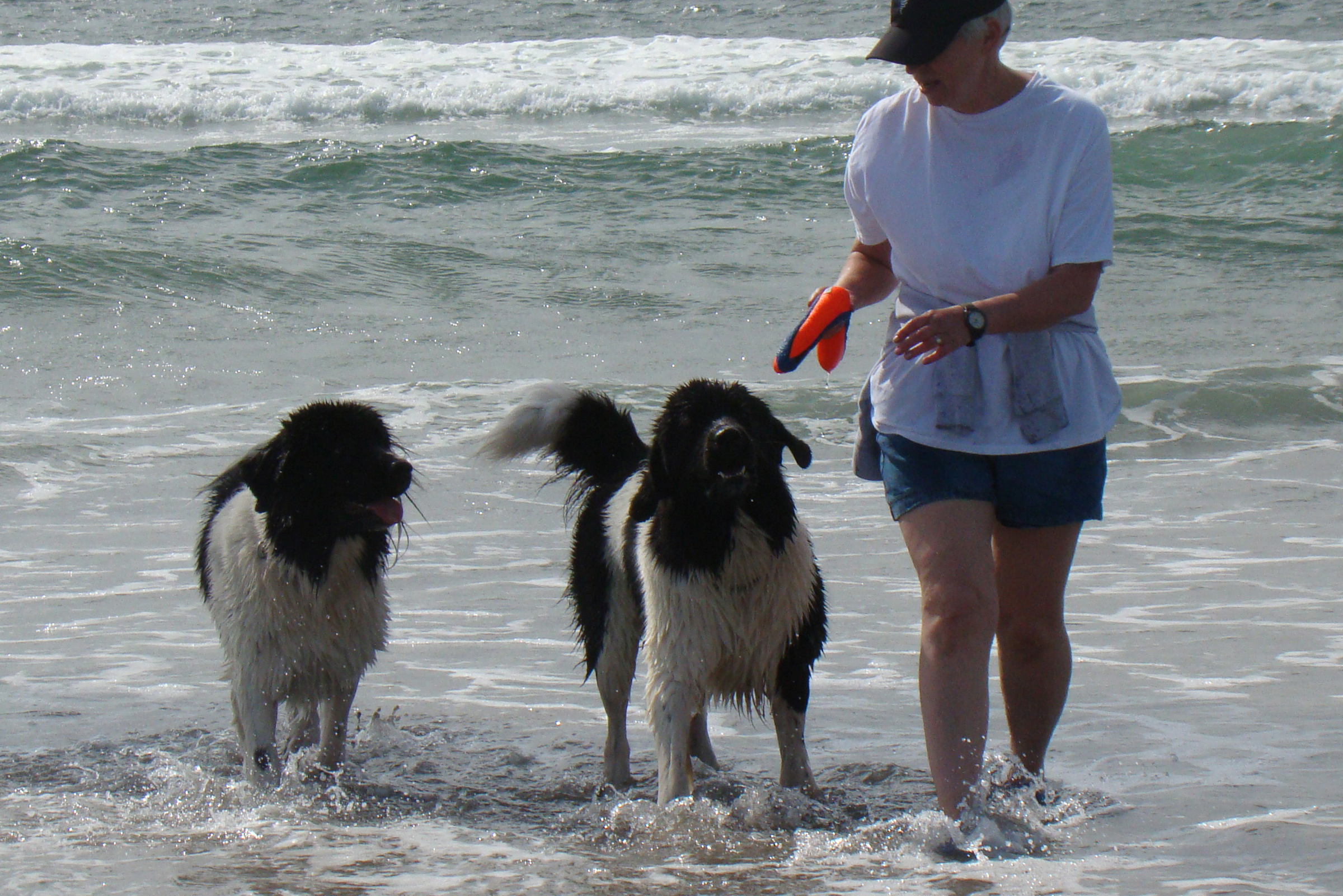
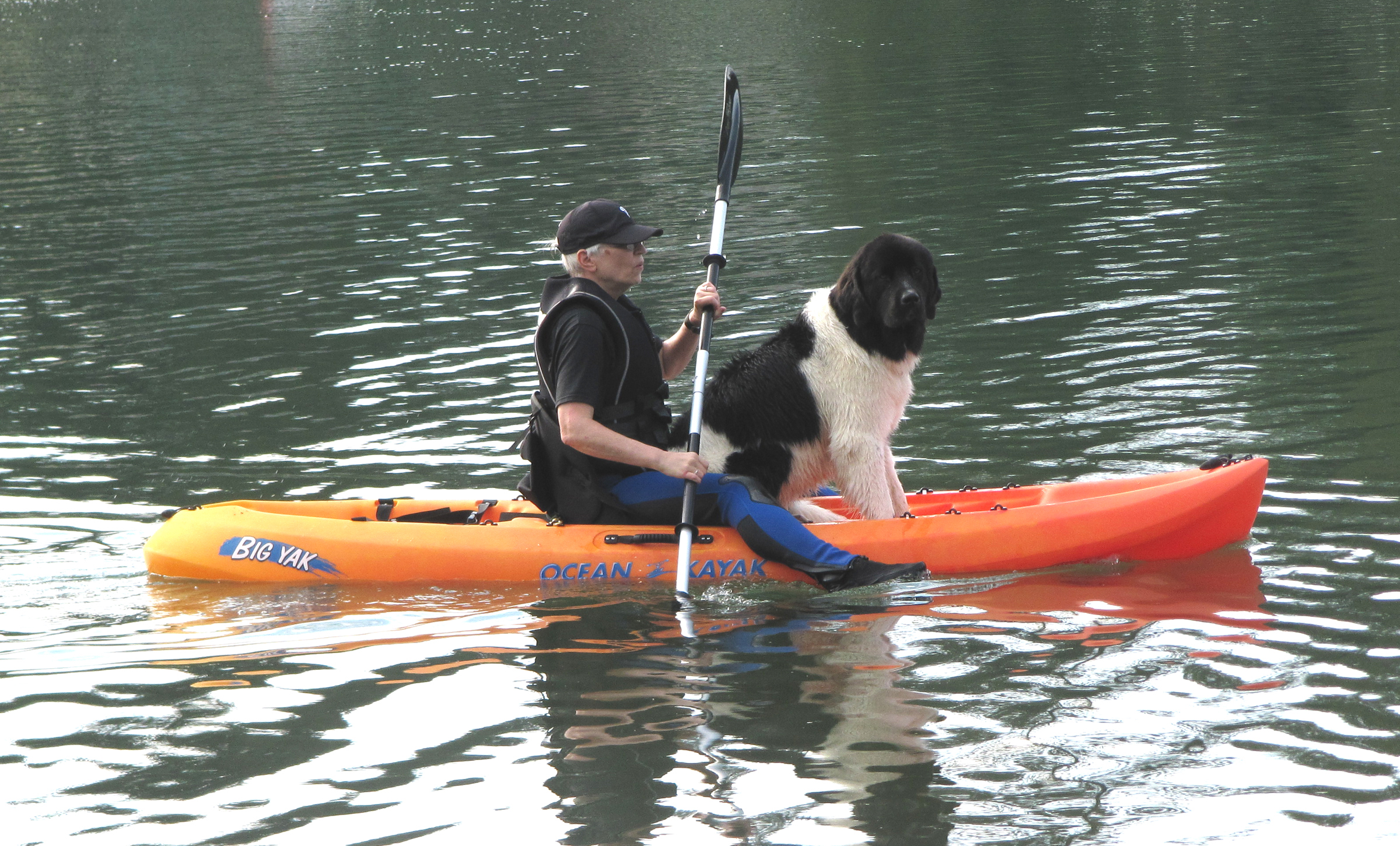
Behind the scenes
The Newfoundland population at the Adler household is usually between four to six dogs. Currently, in addition to their breedable dogs, their canine family includes a twelve year old female, two middle-aged spayed females, and one young breeding hopeful. They feel that “keeping the dogs busy is important, as is keeping each dog well cared for and well groomed. When the numbers start getting too high, it becomes hard for us to provide each dog with the optimum level of care. It would start to feel like the kind of kennel where ungroomed dogs are stuck out in runs, with very little interaction. And that would make us miserable, too.”
The dogs have immaculately kept, spacious indoor stalls and huge fenced outdoor play areas, but despite those, the dogs still live mostly in the house with Judi and Ellis. I was very impressed with their house and its layout, but it is no wonder as it was designed and built to work for the dogs. They have tile floors throughout, there’s a whelping room down the hall, and even a dog feeding room where the everyday dog gear is stored. Ellis has also built several barns. One of the barns is used just for training (as it rains a lot in Oregon, outdoor training isn’t always an option). The second barn is the kennel building with the indoor/outdoor areas for the dogs. The third is used for storage for all the bigger Newfie gear (boats, canoes, carts, travois, etc.) - and it also houses the Adlers’ two dozen chickens!
Training
Judi and Ellis got involved in training literally from the very beginning. When they went to pick up their first Newfoundland puppy, the breeder's visiting friend took them into the nearby fields and showed them how to start the puppy tracking. The puppy’s enthusiasm, going after the scent, sparked the Adlers’ interest in this form of training.
They have remained actively involved in tracking to this day, and it is still their favourite hobby. “Lots of what we do with dogs requires the handler to be proficient. In obedience, we need decent footwork, we need to respond to the judge’s orders and we need to pay attention. In the breed ring, we need to stack the dog to advantage and gait him at the right speed. In draft work, we need to direct the dog over specific routes and issue the right command at the right moment. In agility we need to direct the dog through the obstacles in order, and do it very fast and without mistakes. But in tracking, a good handler’s job is pretty much zero. If I have trained well, all I do is hold on to the lead and keep it from getting tangled. What I also love about tracking is that the dog is born knowing how to do this. Thus, results can be seen very quickly, and the positive reinforcement is amazing - for the dog and for the handler.”
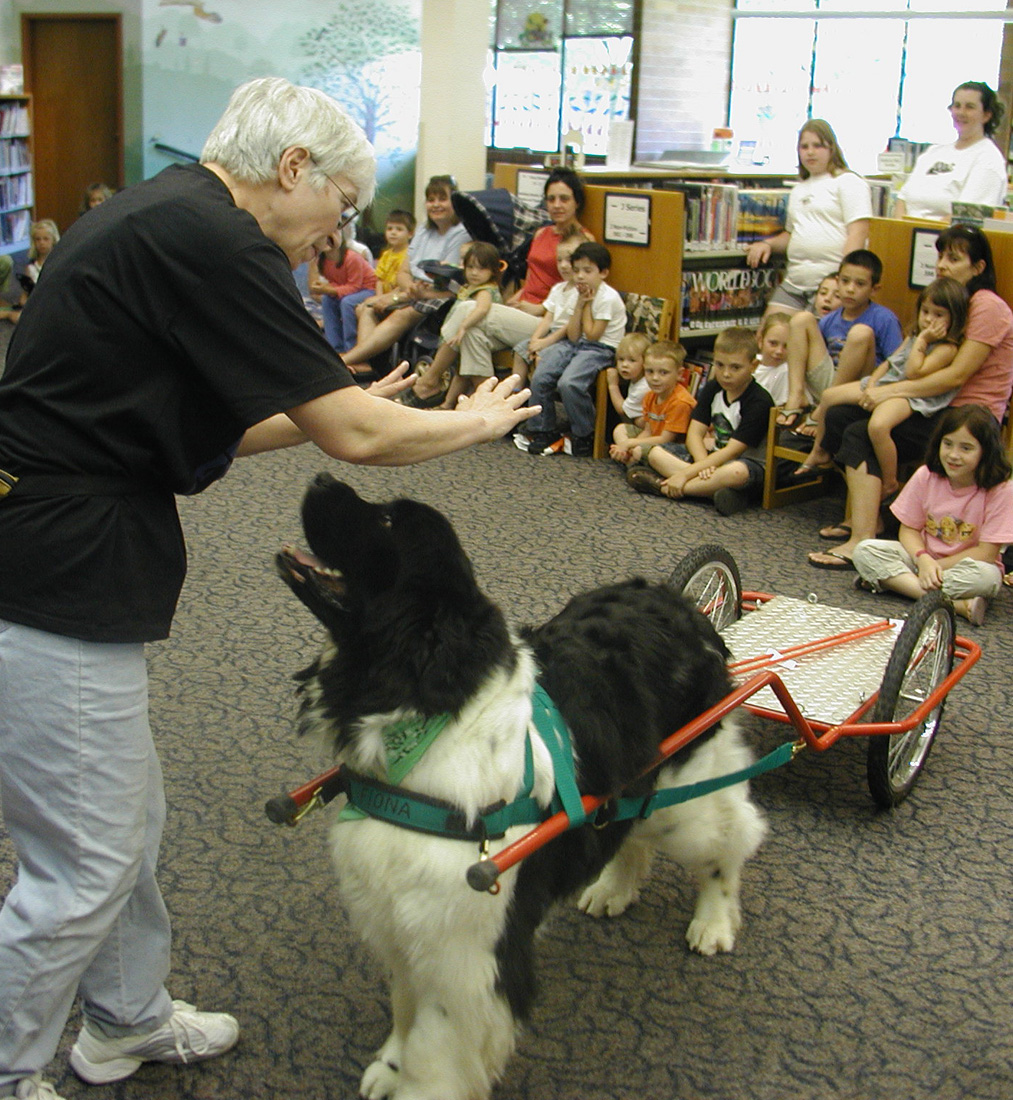
When Judi and Ellis brought their first Newfoundland home, they could see she was incredibly bright and that she liked to be kept busy. Even though they knew nothing about dog training when they started, they discovered that they had a gift for it. But they didn’t just teach the puppy. They learned alongside her. That is also how the majority of the Sweetbay dogs over the years earned their titles: families who were not initially trainers learned along with their puppies and discovered how much fun it was to work with their dogs.
“Dog training, by definition, means that the dog and human are both being trained. We didn’t learn as much from books or from other trainers as we learned from observation. A lot of what we do, we figured out by observing a dog and inventing something on the spot. I believe that good trainers are always learning and always progressing. ”
To Judi, training a puppy starts when he’s newborn. When you pick up a puppy, whether he’s two weeks old or two days old or two minutes old, and you carry him around and talk to him, that’s the beginning of training. As the puppies develop, the Adlers add more structured training to the puppies’ routine: a little grooming, a bit of leash work, some “polite greeting” or “coming when called” lessons. But the puppies don't know this is formal training. To them, it's all play. It’s food-reward and praise-oriented, and the puppies love it.
When the Adlers train, their goal is to build a relationship with the dog rather than training for the sake of a title. They train and show their own dogs, and they encourage their puppy owners to do the same. “You get the best relationship with a dog when you do your own training. And if you go that extra step of testing it in a structured environment like a working trial, and your dog is happy and confident and does the work with enthusiasm, you demonstrate to yourself and to others that you have done a good job.”
Judi and Ellis have also been passionately involved in water work since 1974, when they entered their first puppy in the NCA’s second-ever water test. And for nearly forty years, they have been at the water each summer, happily getting wet with their dogs. They also have a very strong interest in draft work, obedience, and rally, as well as a lighter involvement in other canine activities like musical freestyle and agility.
Writing career
Judi started her writing career by accident. She wanted to create a short pamphlet to give to their new puppy owners. Year after year, the instruction pamphlet kept expanding with new information. Although it initially was only distributed to Sweetbay families, others saw its value and suggested she publish it for the public. Now her Puppy Book is known all around the world, and her water and tracking books are considered the premier books in their fields. Judi also does all the illustrations in her books. “Writing is hard, but drawing is fun. To me, being able to create a picture or diagram that will help someone train more effectively is pure joy.”
The Newfoundland Puppy: Early Care, Early Training
Water Work, Water Play
The Audible Nose: Training Your Newfoundland to Track
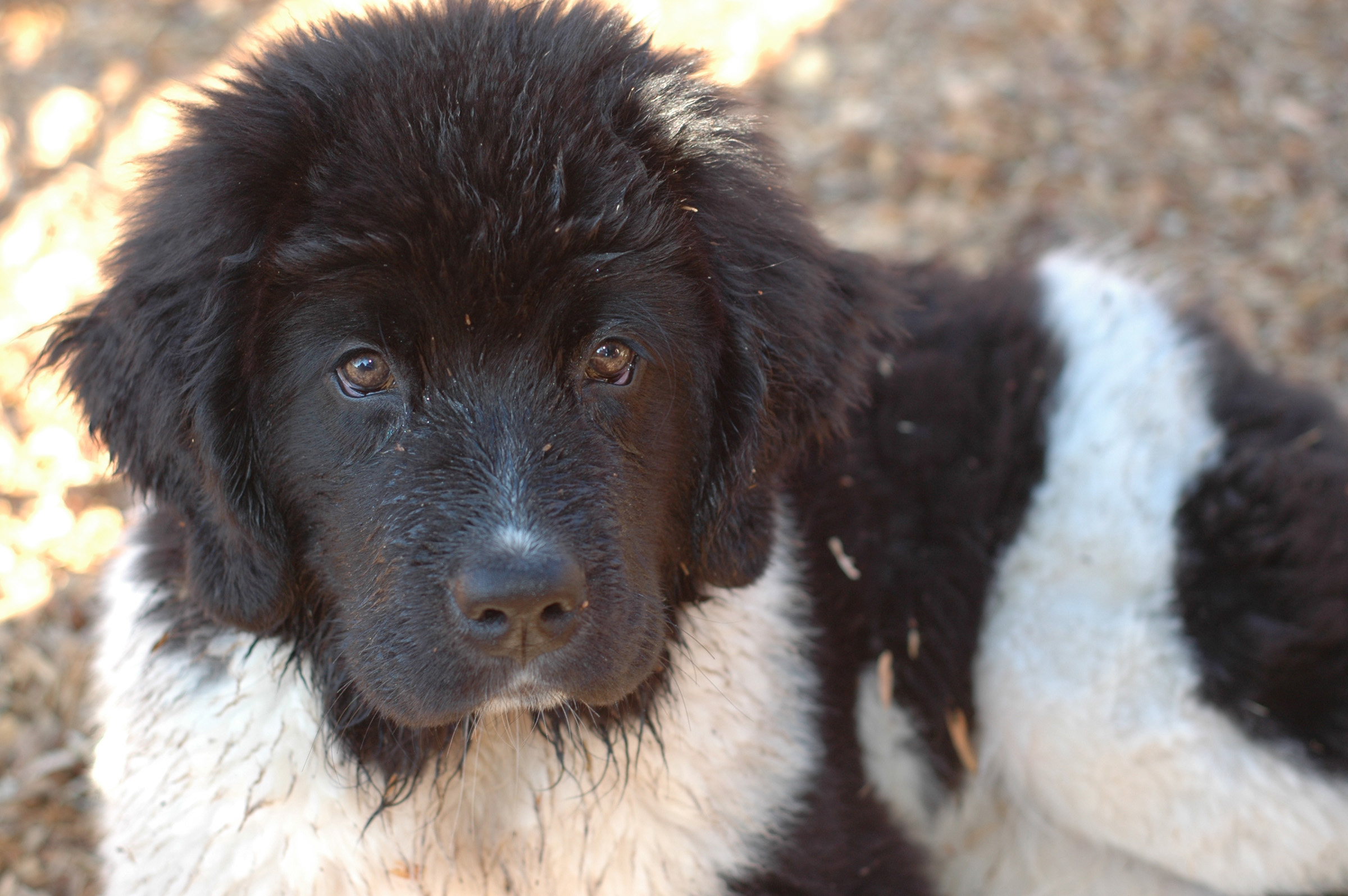
(c) Salmelin